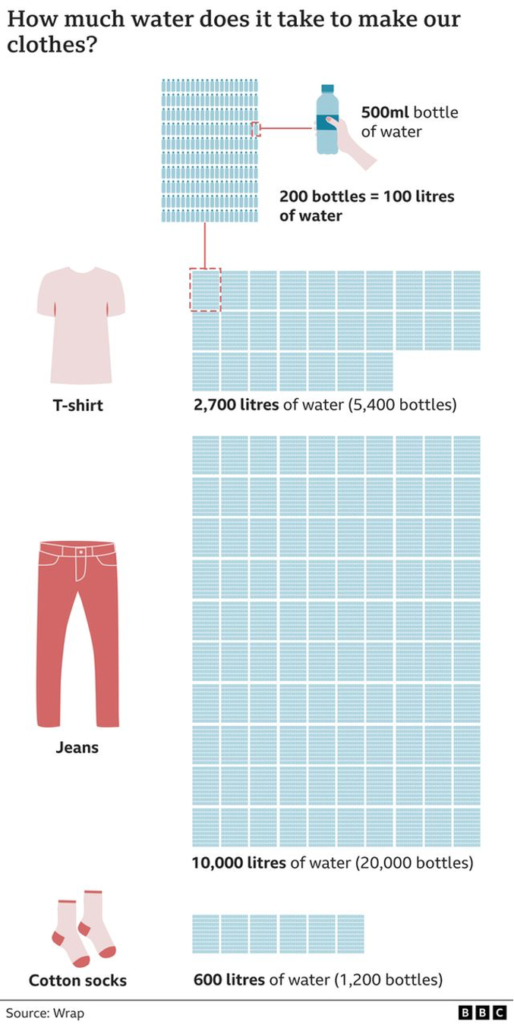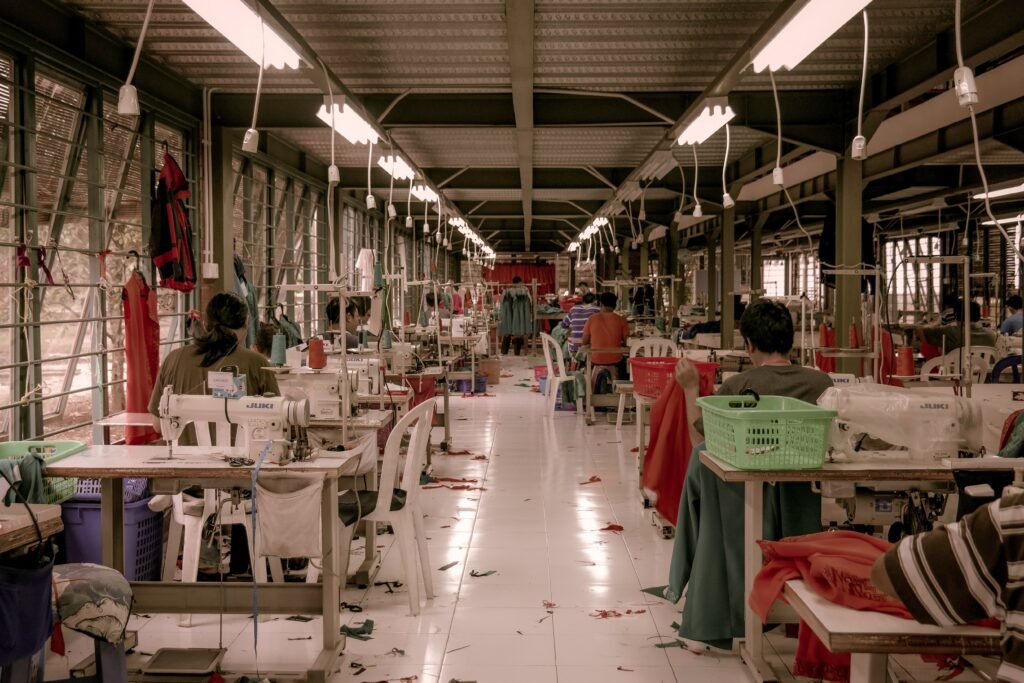The term ‘fast fashion’ was first used when Zara landed in New York at the beginning of the 1990s. It was coined by the New York Times to set out Zara’s mission to take only 15 days for a garment to go from the design stage to being sold in the market. The major players in the fast fashion world include Zara, H&M, Forever 21, and UNIQLO. The term has become more distinct in conversations surrounding fashion, environmental, and sustainability.

The Dark Side of Fast Fashion
According to an analysis by Business Insider, fashion production accounts for 10% of total global carbon emissions. It pollutes rivers and streams and dries up water resources, while 85% of all textiles go to landfills each year. The Quantis International 2018 report established that fiber production has the largest impact on freshwater withdrawal and ecosystem quality due to cotton cultivation. Due to the energy-intensive processes based on fossil fuel energy, the fiber production stage has the highest impacts on resource depletion. The UN Framework Convention on Climate Change estimated that emissions from textile manufacturing alone are expected to skyrocket by 60% by 2030.
The Environmental Impact of Fast Fashion
Water
The environmental impact of fast fashion includes the depletion of non-renewable sources, the use of massive amounts of energy and water, and the emission of greenhouse gasses. The fashion industry is the second largest water consuming industry, requiring about 700 gallons of water to produce one cotton shirt and about 2000 gallons of water to produce a pair of jeans. According to Business Insider, textile dyeing is the world’s second-largest polluter of water, as the water leftover from the dyeing process is thrown into ditches, streams, or rivers.

Microplastics
Brands use synthetic fibers like nylon, acrylic and polyester which take hundreds of years to biodegrade. A 2017 reportfrom the International Union for Conservation of Nature (IUCN) mentioned that 35% of all microplastics, like tiny pieces of non-biodegradable plastic in the ocean come from the laundering of synthetic textiles.
Energy
The production of making plastic fibers into textiles requires large amounts of petroleum and releases acids and violate particulate matter as an energy-intensive process. Furthermore, cotton, which is largely used in fast fashion products, is not environmentally friendly to manufacture. To reduce the waste caused by fast fashion, more sustainable fabrics like wild silk and organic cotton can be used in clothing.
The Social Impacts of Fast Fashion
The fast fashion industry also poses societal problems, especially in developing countries. According to the non-profit Remake, 80% of the product is made by young women between 18-24 years old. A 2018 report from the US Department of Labor found evidence of child and forced labor in the fashion industry in Bangladesh, Brazil, India, China, Indonesia, Philippines, Vietnam, and others. Developing nations rarely follow environmental regulations. For example, China is a major producer of fast fashion but it is notorious for air and water pollution and land degradation.
How can fast fashion footprint be reduced?
The UN has launched the #ActNow Fashion Challenge to emphasize how industry and individuals can help improve the environmental impact of the industry. Several firms, including H&M, Adidas, and Zara have launched “eco” collections,which use organic and recycled materials. However, these collections cannot solve the biggest problem: overconsumption.Buying pre-owned products can be another option to extend the life of clothes. But, this doesn’t really mean that shoppers buy fewer items. According to the waste charity Wrap, the second-hand consumption is unlikely to replace more than 10% of new sales. It suggests other approaches, like encouraging people to repair existing pieces.
Currently, the fashion industry is responsible for more yearly carbon emissions than all maritime and international flights combined. If the industry remains the same, an increase of 50% in greenhouse gas emissions can happen within a decade. As an alternative solution, mindful purchasing of fast fashion brands can support a reform. By doing background checks on brands before purchasing, you can help to be a more informed customer and monitor the purchases in a manner that aligns with environmental values. When there are proactive steps towards advocating for becoming an environmentally conscious consumer and a green-friendly fashion industry, climate change can be slowed down in the future.

References
https://earth.org/fast-fashions-detrimental-effect-on-the-environment/
https://www.bbc.com/news/science-environment-60382624
https://environment.co/the-fast-fashion-environmental-impact/
https://psci.princeton.edu/tips/2020/7/20/the-impact-of-fast-fashion-on-the-environment

